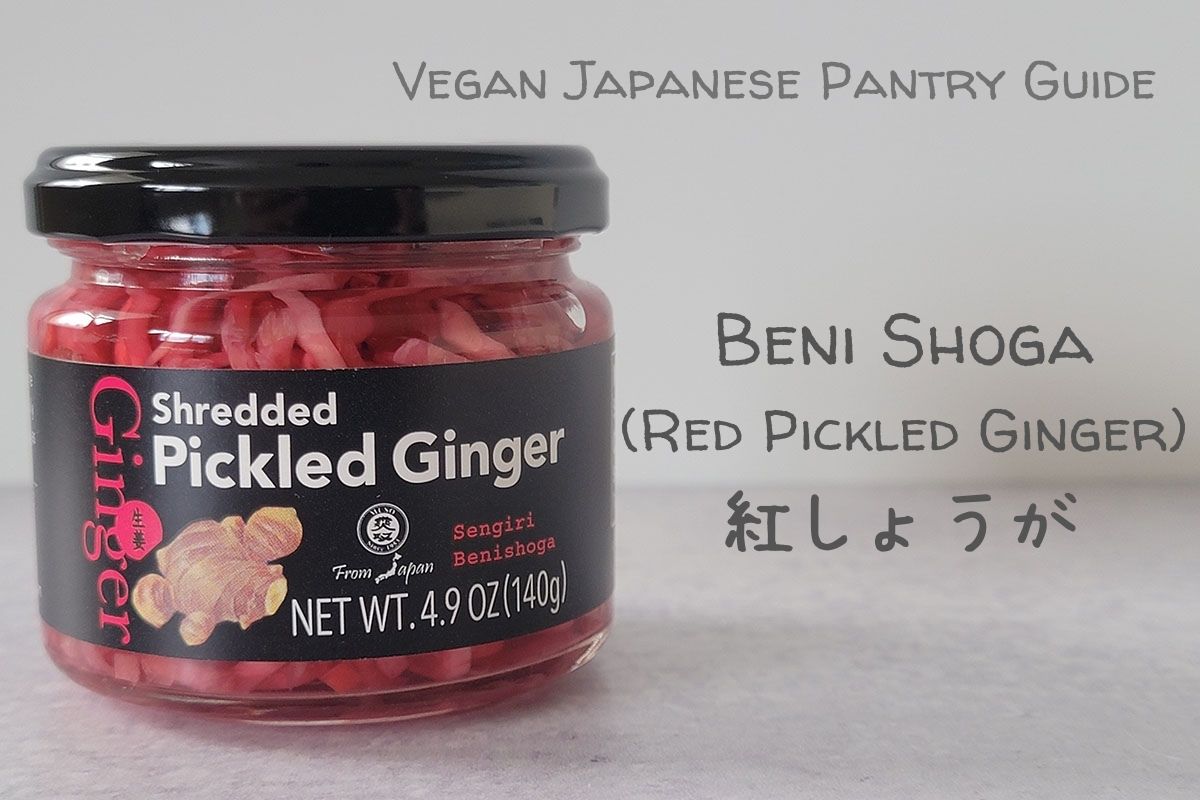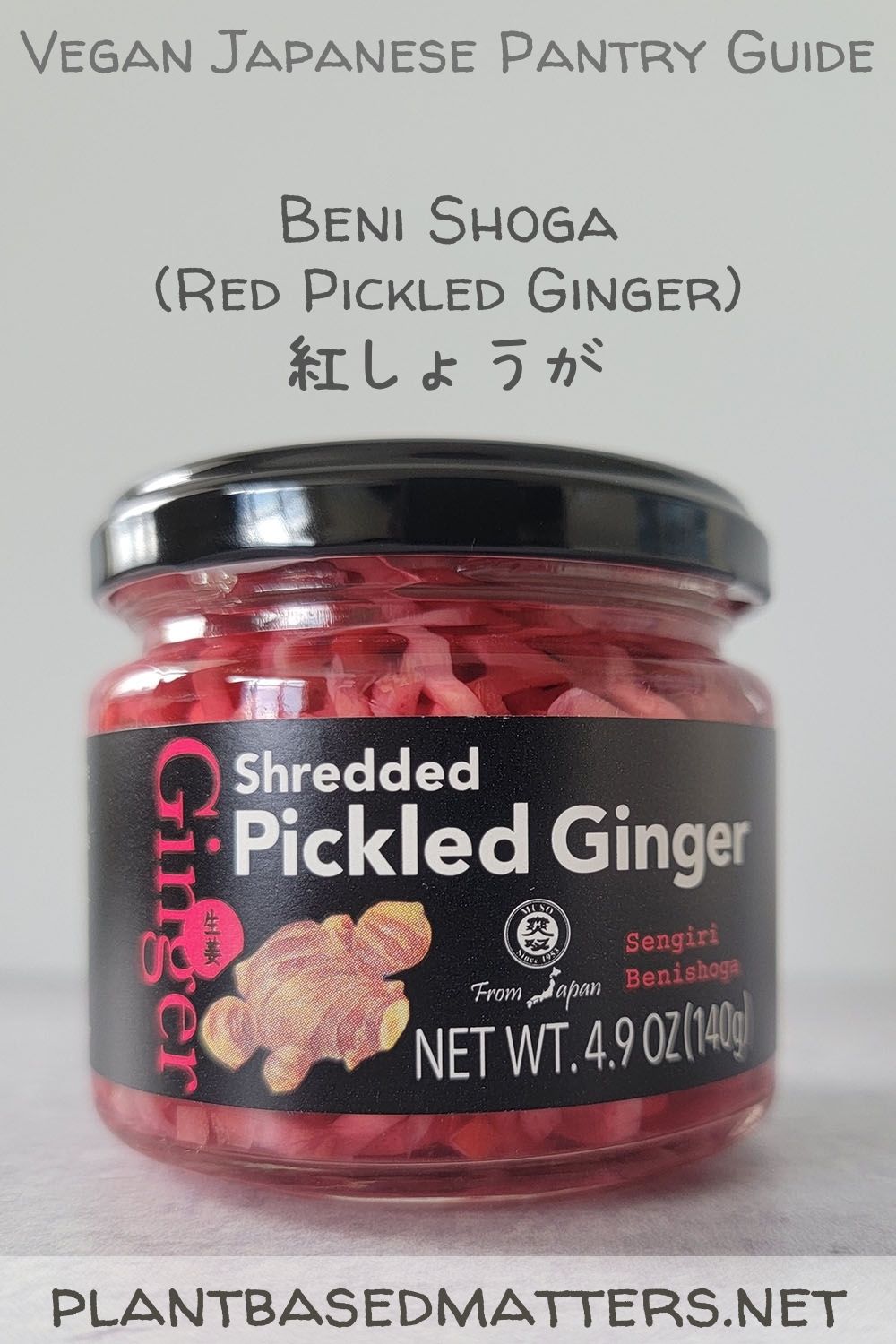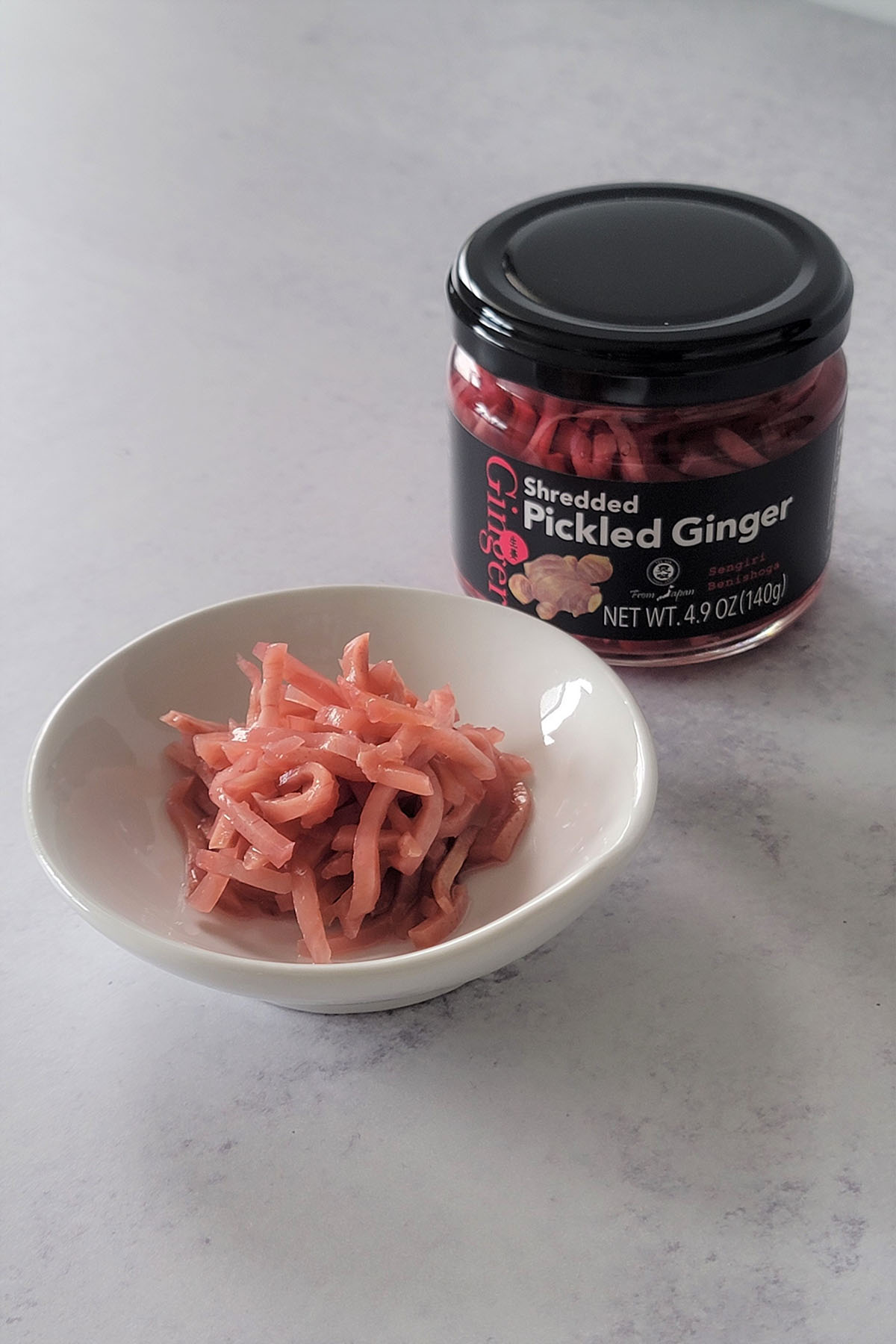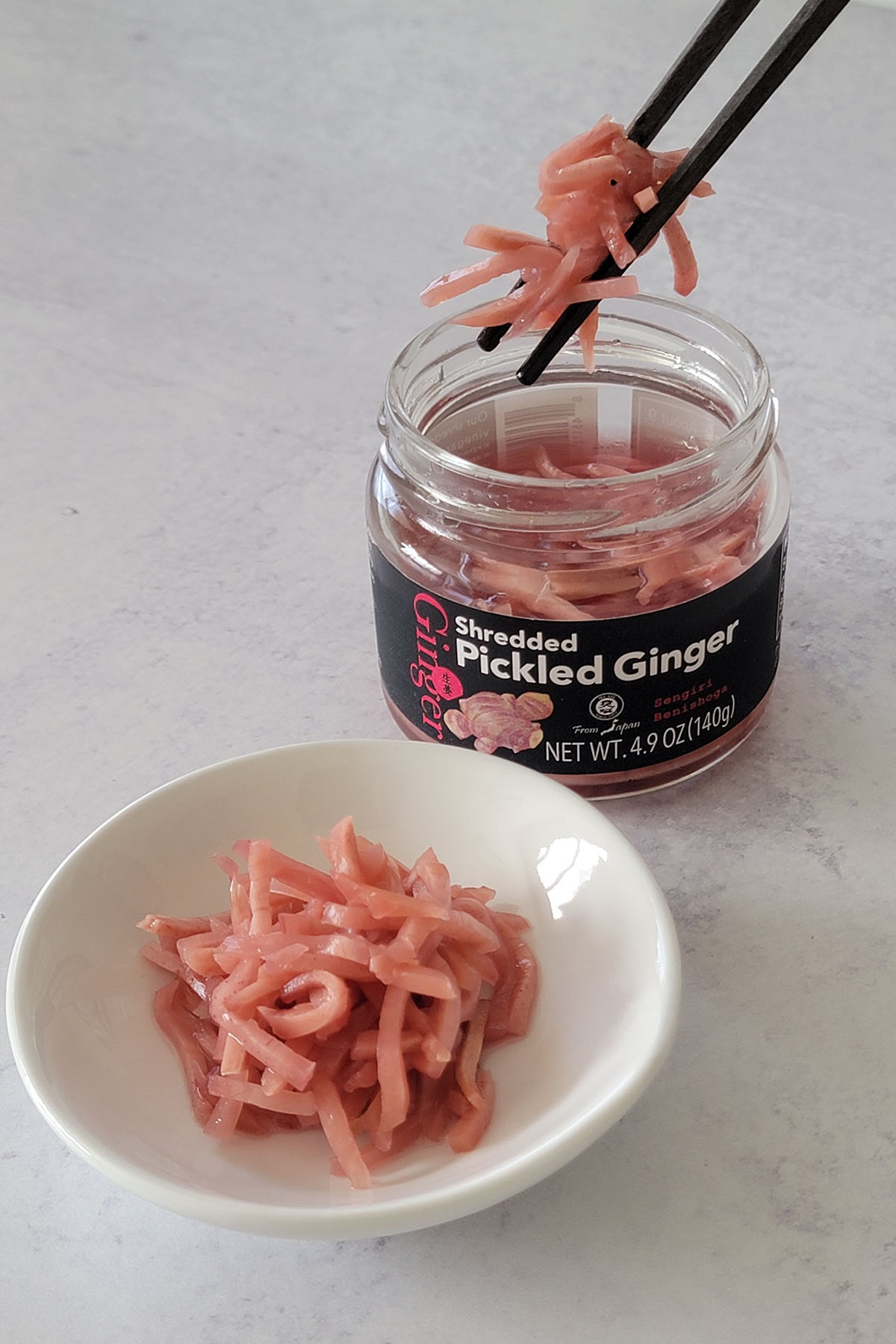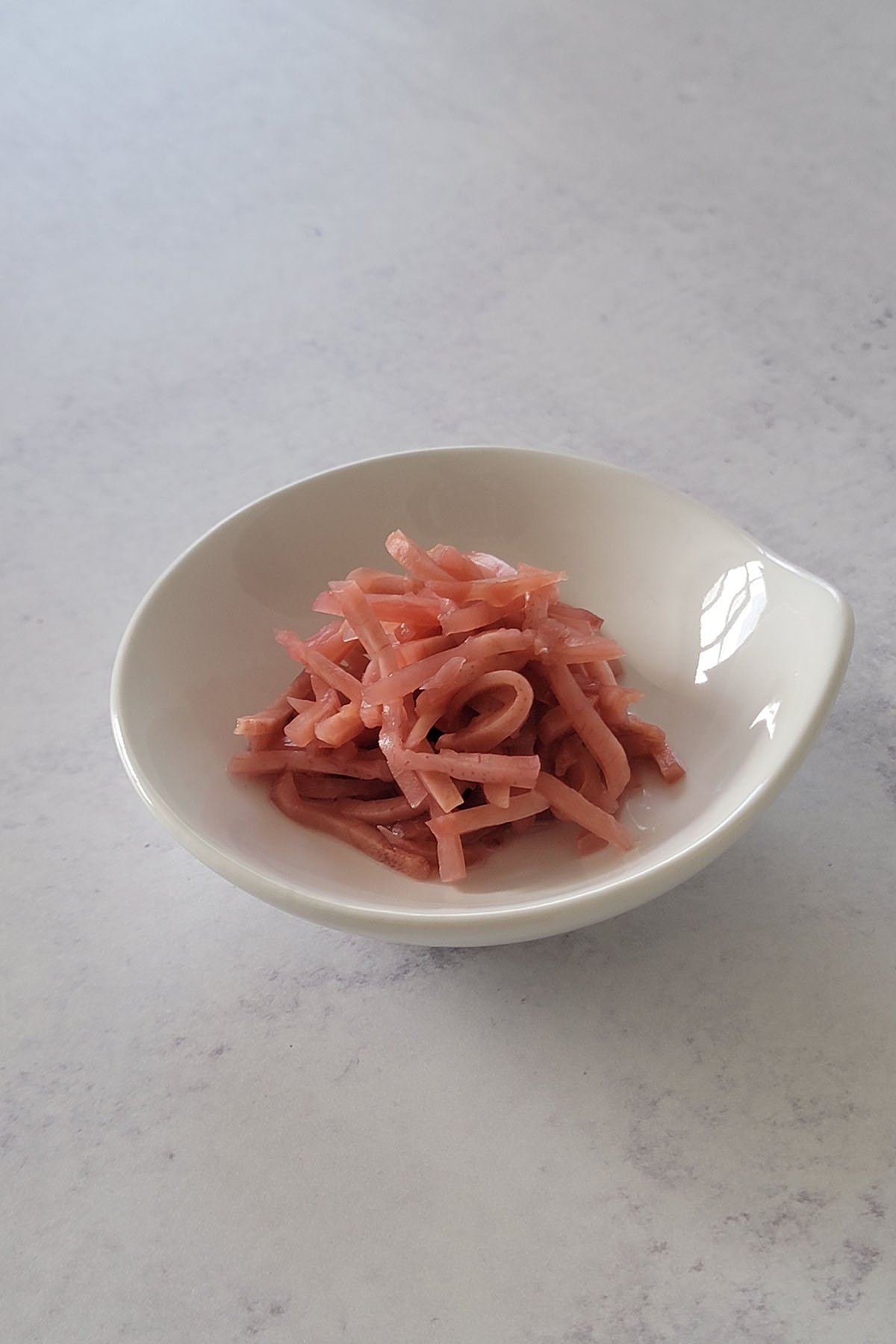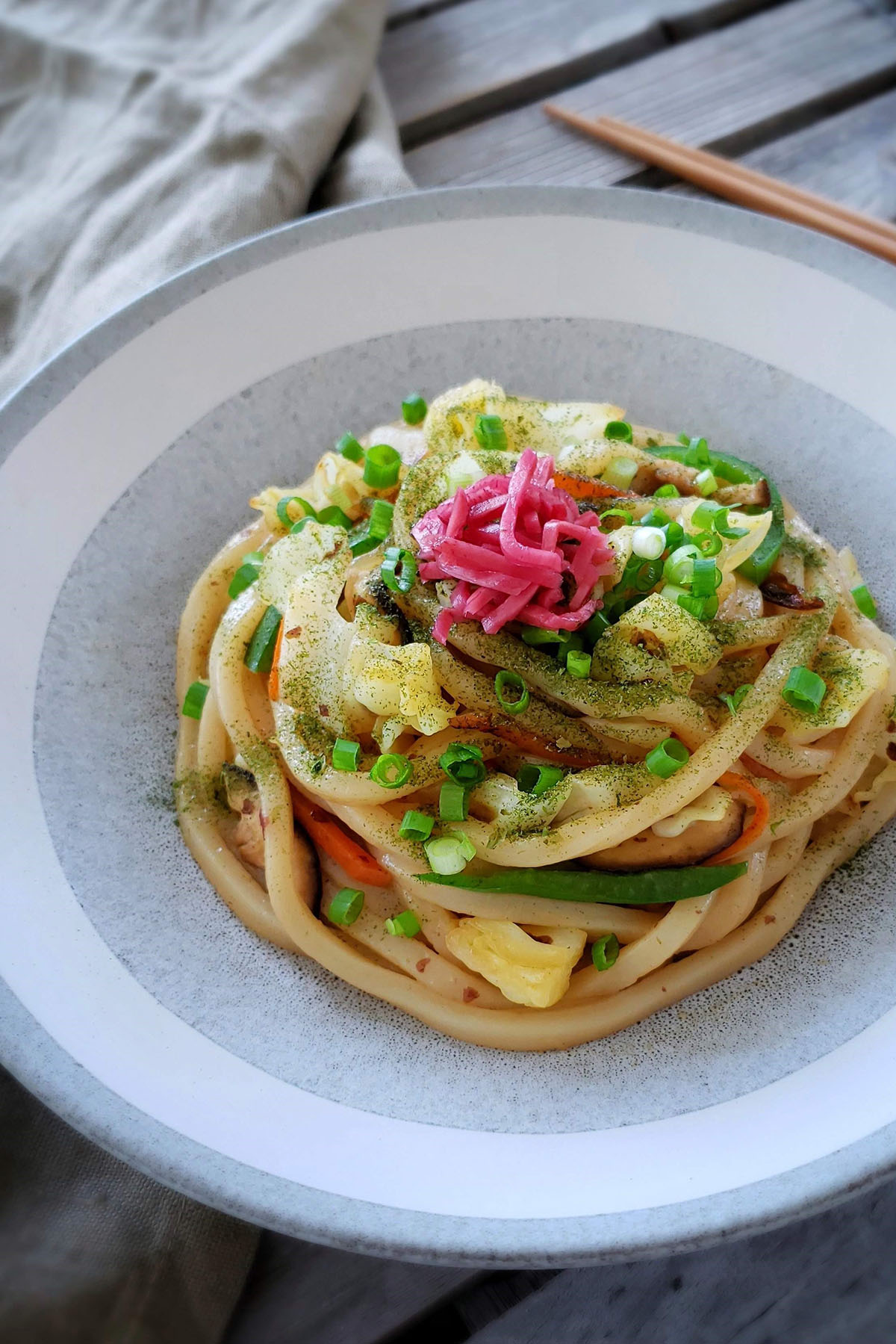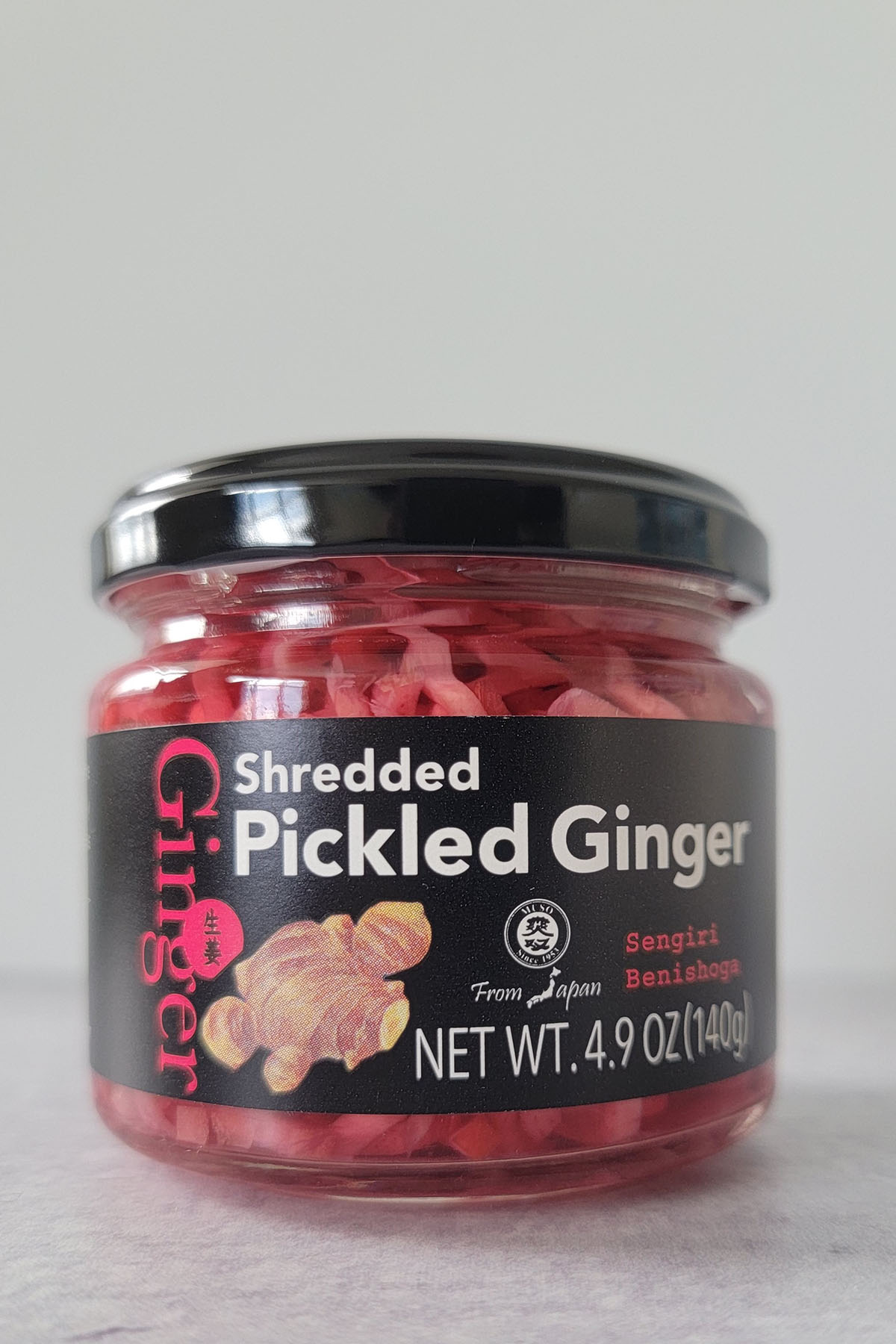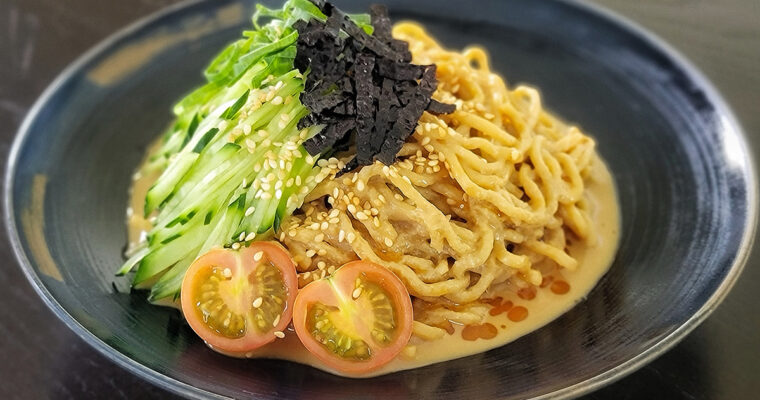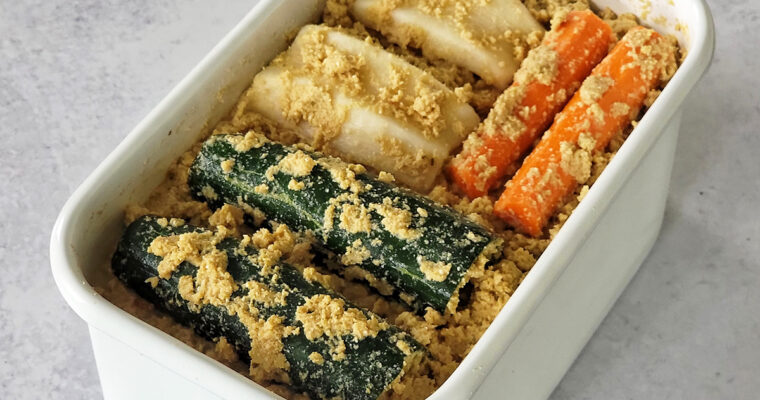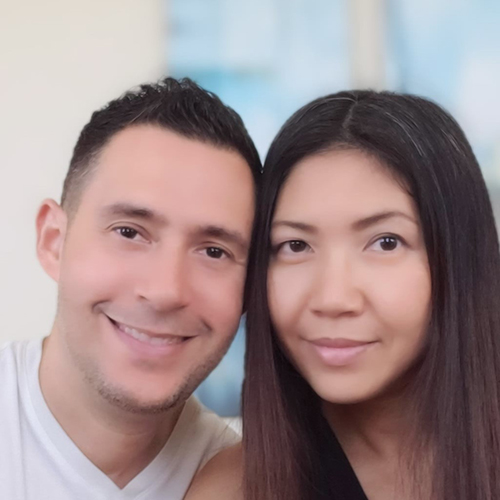Last Updated on June 3, 2023
Beni Shoga (Red Pickled Ginger Stirps) is non-fermented Japanese ginger pickles that’s pickled in ume plum vinegar. It’s often used as a topping for Japanese dishes such as okonomiyaki (Japanese savory pancakes) and yakisoba (Japanese stir-fried noodles.) Beni shoga is vegan, gluten-free and oil-free. If you haven’t tried beni shoga yet, add it now to your vegan Japanese pantry!
What’s Beni Shoga?
Overview
Beni shoga is a type of pickle that’s made of fresh ginger strips. The word “beni [紅]” means red and “shoga[生姜] or [しょうが]” means ginger in Japanese.
The iconic red color of beni shoga comes from the color of ume plum vinegar. Ume plum vinegar [梅酢] is a type of Japanese vinegar that’s briny and naturally red due to the use of red shiso perilla leaves. Unlike the other Japanese pickles like nukazuke, it’s not fermented.
You can either buy one from stores or you can make your own by using fresh ginger, salt and ume plum vinegar.
Taste
Just like typical pickles, beni shoga is briny, vinegary and has a nice spicy kick from the ginger. Beni shoga isn’t something that you eat on its own but when you use it as a topping, it gives a nice salty & vinegary bite to the dish.
In comparison to the lighter color pickled ginger called “gari [ガリ] “that you often see on the side of sushi, beni shoga isn’t sweet at all.
Aroma
Beni shoga has an aroma from the ginger and ume plum vinegar. It isn’t strong at all so you can consider it as an entry level or beginners-friendly Japanese pickles.
Too Red?
Here is an important tip for you where you look for beni shoga. You may notice that beni shoga products have a different shade of red from one product to another.
AVOID those unnaturally bright red color beni shoga!!
Why is it so artificially red? Because they may be made with synthetic food colorings!! I don’t know about you but for me I prefer not eating those. Also, some may have chemical food additives or hidden MSG. Always check the ingredients list when you aren’t sure!
Good news is that you can find good beni shoga that’s free from those additives! Be sure to check out my recommendation at the end of the post 🙂
Ways to Use Beni Shoga
Beni shoga pairs well with plain flavor foods to add a salty bite to accent the overall flavor. However, it also goes well with somewhat heavy (oily) dish because the briny & vinegary and somewhat fresh taste of beni shoga can cut through the heaviness of a dish.
Some examples of dishes that you can use beni shoga are:
- Okonimiyaki
- Yaki udon
- Yakisoba
- Fried rice
- Onigiri (Japanese rice balls)
- Pasta
- Tempura
If you want to discover more flavor combination, try using beni shoga with anori. In my opinion, beni shoga can’t go wrong with any dishes that you can use aonori for.
How to Store
Most beni shoga products are sold in a glass jar, plastic container or a plastic pouch.
If you buy the one in the glass jar or plastic container, you can keep it in the same package and store in the fridge once it’s open. In contrast, when you buy the one in a plastic pouch, you should transfer it to your own container with a lid (airtight container is preferred) after opening and store in the fridge.
Where to Buy
Most likely, you won’t find beni shoga at your regular grocery stores. Otherwise, try Asian grocery stores (especially Japanese and Korean) where you should be able to find one. Another great option is to fine one at online stores which could be much easier finding one depends on where you live.
If you live in the US, you may be able to spot one at health conscious grocery stores like Whole Foods Market or The Fresh Market.
My recommendation is listed below.
Shredded Pickled Ginger from Gold Mine Natural Foods
This product is my go-to beni shoga. It comes in a glass jar and a metal cap. It’s not organic but tastes great and made with simple ingredients with no additives. You can also find the same exact one on Amazon.
